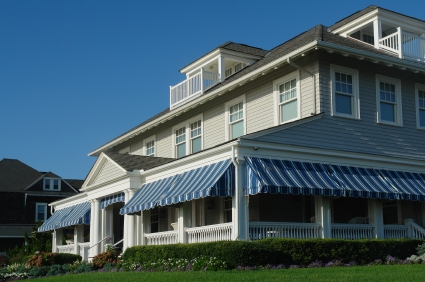 Brought about by the beauty of the forest, wildlife, lakes, streams and rivers, there has been a large increase of communities being established in the wild-lands. Along with this increased interest to live in such locations is the threat of wildfires which has in turn challenged local government officials to create programs to safeguard and provide protection to such communities. Along with this is a growing concern of homeowners as to whether their house can survive such a catastrophe.
Brought about by the beauty of the forest, wildlife, lakes, streams and rivers, there has been a large increase of communities being established in the wild-lands. Along with this increased interest to live in such locations is the threat of wildfires which has in turn challenged local government officials to create programs to safeguard and provide protection to such communities. Along with this is a growing concern of homeowners as to whether their house can survive such a catastrophe.
All residents of such fire-prone areas should help to prevent and suppress forest fires and wildfires certainly for their own welfare and safety. They should also know how to protect their homes and help reduce any impending risks.
Good Site Planning
Many places in the United States are at high risk for forest fires. This threat is even greater for those who are located in what is considered the “wildfire zone.” This is why it is essential for people who are choosing to buy or build a home to choose a good location. A house should be located in a viable defense space, which means there is enough area surrounding the structure to control how fast a fire will spread.
Basically, there are three zones to be considered: Zone One, Zone Two and Zone Three. Zone One should be at least thirty feet from the building and vegetation should be restricted to native species. In Zone Two, existing trees that are thirty feet away from the building should be at least ten feet apart with constant trimming done of any dying or broken limbs. Zone Three should be managed carefully because this is the area where plants are highly flammable. Fundamental knowledge of this information is essential for preparedness.
For those families who already live in wildfire-prone areas, a good maintenance schedule such as tree-trimming and surrounding area cleaning is essential.
Non-Combustible Components
Due to a large exposed surface area, roofs are highly susceptible to flames. To decrease this risk, Class-A rated roofing material such as metal, clay, slate, or asphalt shingles should be chosen because they are made from non-combustible components and will provide added protection. Soffit and eaves troughs often catch burning embers and should be covered with burn-resistant screens as should chimneys, ridge vents and stove pipes. In addition, wood siding, decks, porches and other major structures should be treated to be less flammable.
Risk Reduction
There are numerous strategies to consider to minimize the risk of flames. When living in fire-prone areas, the intensity that impacts property can be decreased using the following methods.
- Defensible Space – Establish and keep a defensible space around the property.
- Burn-Resistant Vegetation – Only use burn-resistant plants, shrubs and trees such as pine wood instead of hard wood.
- Prune – Always prune dead limbs, water the plants and clean dry leaves from the surface of the roof and surrounding areas.
- Removal – Remove shrubs that are highly flammable as well as small trees.
When a wildfire begins to creep closer to homes, it is nearly impossible to significantly protect property at that time and defenders feel nearly incapacitated to decrease losses; even forest marshals have a hard time with this. By using burn-resistant components, understanding fire behavior, managing the surrounding forest to create a good defensible space, and using fire-resistant vegetation, such a risk can be decreased as can the amount of damage. Having proper knowledge and applying it to fire risks can help protect the integrity of a roofing system!
Let Schulte Roofing be the Brenham Roofer You Need!
Are you looking for a Brenham roofer that is knowledgeable about protecting your roof from fire? Call Schulte Roofing at 800-367-7663 to address such issues and any other roofing needs for all Brenham area clients!
